Phases of the Female Reproductive Cycle - Hormonal regulation
FSH, LH and estrogen • FSH travels through the bloodstream from the anterior pituitary to the ovaries. • FSH promotes follicular growth. Increased follicular growth promotes estrogen production. • Small increases in blood estrogen levels inhibit the release of FSH and LH into the blood but promote their accumulation in the anterior pituitary. Estrogen and LH • High estrogen levels exert a positive feedback effect on both the hypothalamus and anterior pituitary. • A rush Of LH and FSH is secreted. • The LH surge initiates ovulation (release of the secondary oocyte) and triggers a decline in estroger production by the follicle. LH also transforms the ruptured follicle into a corpus luteum. Estrogen, progesterone and inhibin • The corpus luteum secretes both estrogen and progesterone, increasing their blood levels. • Increased ovarian hormones inhibit the release of LH and FSH. • The release of inhibin from the corpus luteum enhances this inhibitory effect. • As gonadotropin (FSH and LH) levels decline, the corpus luteum begins to degenerate, reducing estrogen and progesterone production. • The sharp decline in ovarian hormones triggers the release of GnRH, LH and FSH and the begins again.
Add To
You must login to add videos to your playlists.
Advertisement



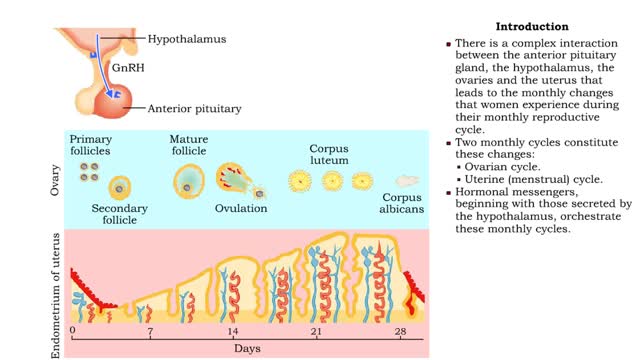
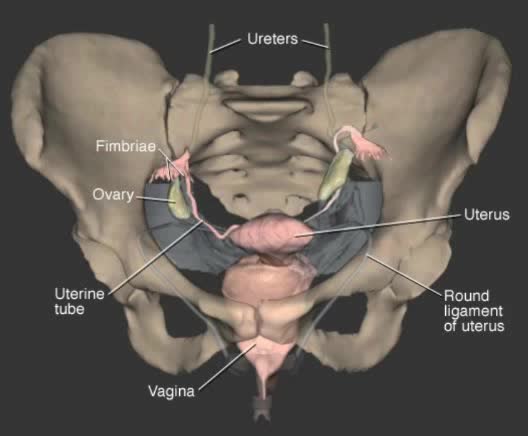
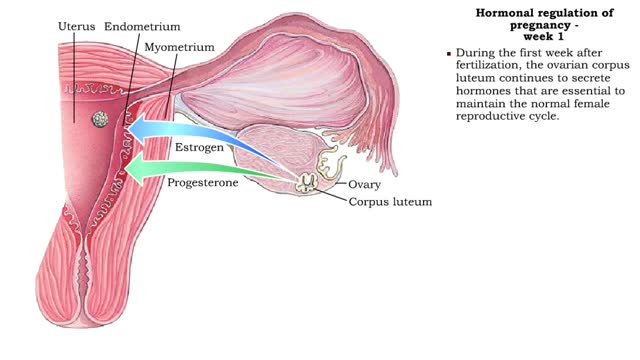
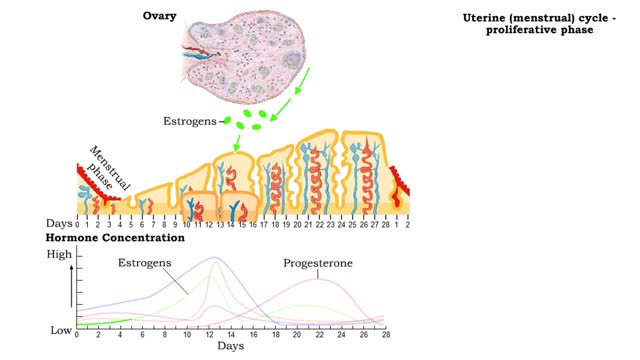
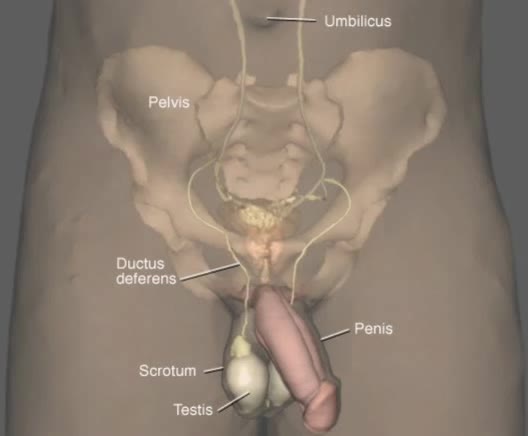
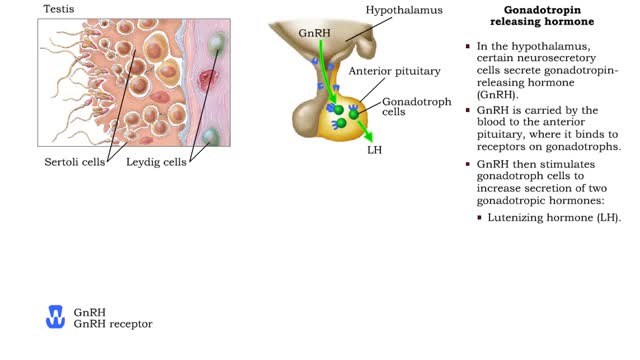
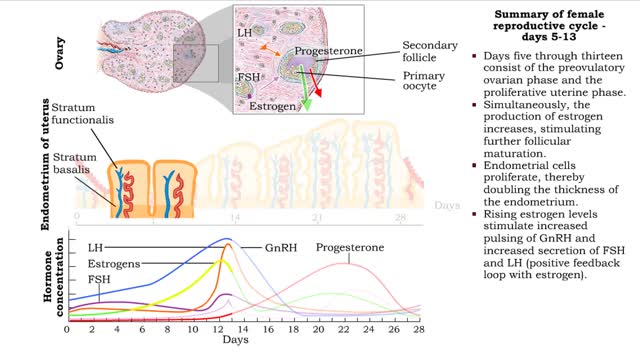
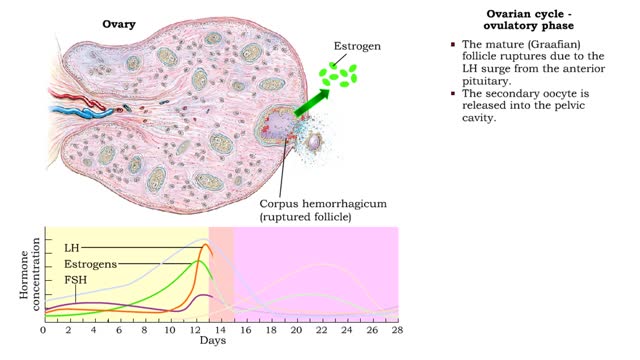
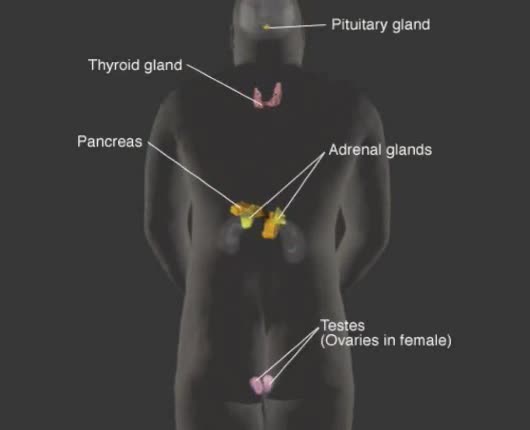
Comments
0 Comments total
Sign In to post comments.
No comments have been posted for this video yet.